The world is full of color. Nature gives us beautiful, vibrant shades everywhere. Roads are full of cars in all kinds of sleek shades, and even the produce aisle at the grocery store is a veritable rainbow. Colors are more than just a background for the eyes, though — they also have a tremendous impact on how we feel. Nowhere is this more true than in our own homes.
Did you know having the wrong paint color on your bedroom wall will leave you feeling like you’re starting every day on the wrong foot? Setting the right mood with the right paint color can feel tricky. So with your emotional well-being in mind, we looked at eight interior colors to explore where they’re best suited.
How Room Color Affects Mood
You’ll be fascinated to know how room colors affect mood and evoke emotions in people, such as sadness, happiness or anger. The idea of color psychology in room design is supported by scientific research that shows some colors have universal meaning.
Ancient cultures used color therapy as a treatment for specific ailments. Today, colorology is a holistic treatment that serves people in many ways.
In this treatment:
- Red is used to stimulate the body, increase circulation and induce excitement.
- Yellow is believed to stimulate nerves and purify the body.
- Orange is used to heal lungs and increase energy levels.
- Blue is thought to reduce and calm illnesses while lowering pain levels.
- Indigo shades are believed to reduce skin issues.
It’s easy to see how color therapy and other cultural factors impact how we feel about the paint colors in our homes. Exciting modern studies that show how color can affect moods include:
- Warm-colored placebo pills (orange, red or yellow) are reported to be more effective than cool-colored placebo pills since red is used as an energy inducer.
- Blue-colored streetlights might reduce crime levels since the color is often associated with peace.
- Red causes people to react faster and more forcefully, which makes it an effective paint color for workout rooms.
- Black uniforms are likely to receive penalties, and people tend to ascribe negative qualities to sports players wearing black. A black room could stimulate feelings of negativity rather than optimism and fun, so it’s essential to remember color theory before choosing a color for your room.
Scientists are still learning how associations between emotions and colors are formed and how strong these associations are in the real world. However, our current studies reveal a correlation between psychology and color design, which can be useful in your home painting projects.
Learn more about color theory for painting your rooms to craft a specific mood and energy level for your space.
Yellow
The ultimate uplifter, yellow, is your go-to when you want to get out of a funk. While softer pastel yellows can work in a bedroom, anything brighter might be too stimulating for light sleepers. A canary shade will work in kitchens or dining rooms sparingly rather than as the main color scheme. Studies show that warmer colors increase metabolism and energy spikes, which might reveal why people are more likely to lose their temper in a bright yellow room and why babies seem to cry more in them.
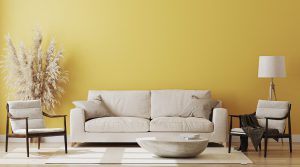
Blue
Science shows that colors on the blue side of the spectrum, such as blue, purple and green, can evoke tranquility and relaxation. Because of this, blue is fantastic in bedrooms and bathrooms.
To maximize your relaxation, make sure there’s lots of natural light to soften up a pastel blue that could end up looking chilly on the wall. If considering blue for a dominant color in the living room, remember that super dark shades of blue have a reverse effect, evoking sadness.
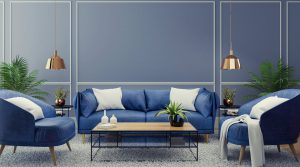
Red
The phrase “seeing red” to describe feelings of anger isn’t without merit. Colors in the red area of the color wheel are warm and include red, orange and yellow, which might be why people associate them with either warmth or anger.
Red is the most intense color choice on the wheel, and it raises blood pressure. While most will want to avoid red for a bedroom color choice, consider red hues for a dining room or an office, as its stimulative presence can help get conversations flowing.
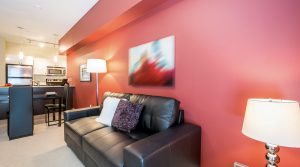
Gray
Serenity is a gray paint stroke away. To create a Zen-like atmosphere in your bedroom, choose light grays, which work well for those who want to feel calm. Gray represents peace and can give you balance, making it a perfect choice for a bathroom. To counter the notion that gray can be dull, some might choose to include pops of color in accent decor to benefit gray rooms.
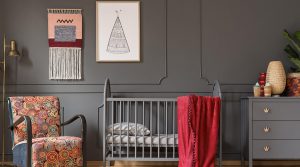
Green
Combining the calm of blue and the cheerfulness of yellow, green is the most versatile color and can work in any room of the house. Green’s calming effects are associated with its relation to nature and the lush beauty of trees and plants. It’s also shown to increase creativity and motivation, making it an excellent choice for an art studio. The hue is also a proven stress reliever, and with its mind-clearing effect on moods, it’s an ideal bedroom choice for those restless sleepers or for an office to start each day off fresh.
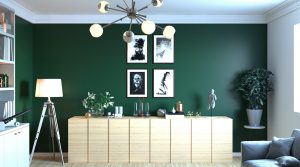
White
To conjure up feelings of starting afresh, choose white as the perfect blank slate to make your home feel more open. Neutral colors in the white and beige family don’t have much of an effect on mood, but you want to avoid stark whites, which can make people feel anxious. Opt for warmer shades in a kitchen to create a modern yet cozy feeling.
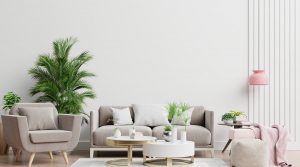
Purple
Perhaps the most dramatic in the bunch, purple can spark creativity, making it a unique choice for a home office. Purple is also viewed as a symbol of wealth and extravagance. The association between the color purple and the idea of royalty began in ancient times when the Phoenician purple dye was rare and expensive.
Lighter lavender shades work well in the bedroom, where it gives off a romantic and luxurious vibe while still keeping it calm. Darker plum shades might be a tad more sophisticated and can also lower energy levels, so it’s best to keep them as an accent wall.
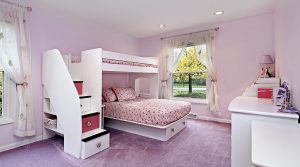
Orange
Looking for some excitement in your life? Orange can be a real game-changer for your home gym or playroom as it brings a burst of energy and enthusiasm to crush that workout. Orange is too perky to help you unwind in the bedroom, but it’s an interesting choice for a bathroom to make you feel excited to start the day.
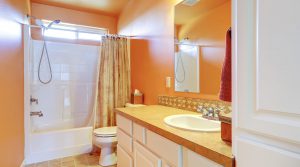
Pick Your Favorite Room Color With Rent Painters
Choosing to paint your home or give it a refresh can be a great way to boost your home’s value and your morale. Getting the right paint color is only part of the painting process. Trust an experienced paint professional to get the job done quickly and efficiently, leaving you more time to enjoy your new mood-boosting colored walls. Contact us today for a quote or to schedule your painting job or get a free estimate using our calculator

